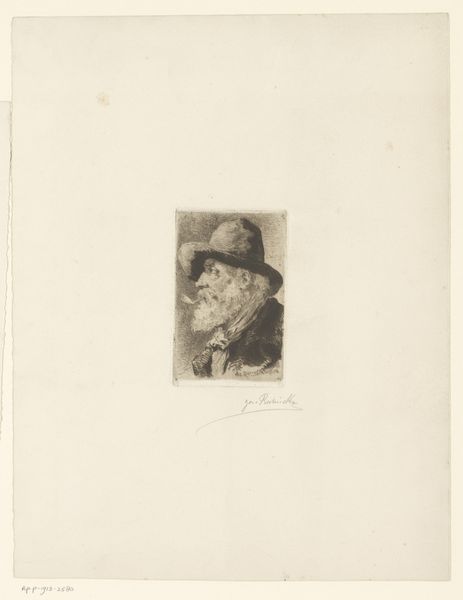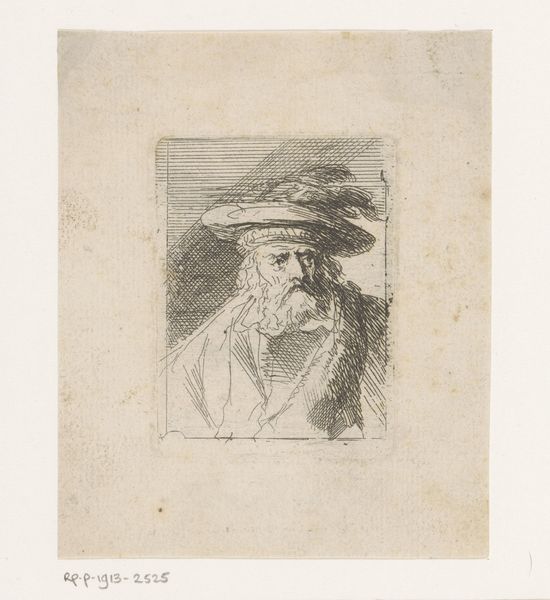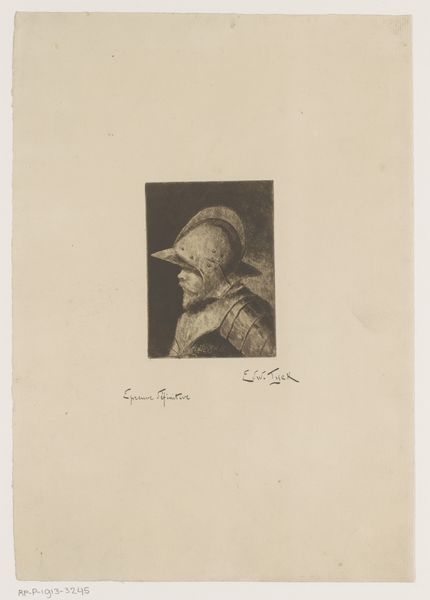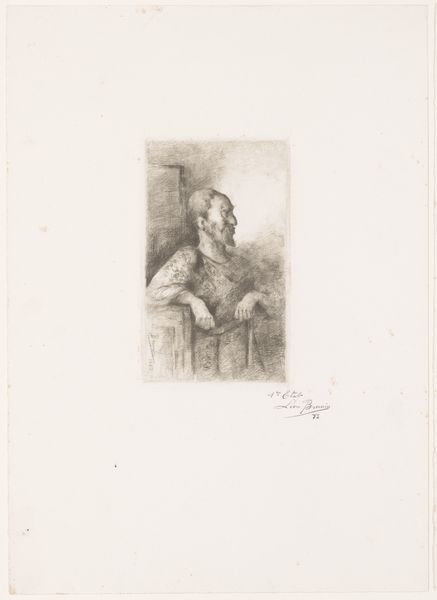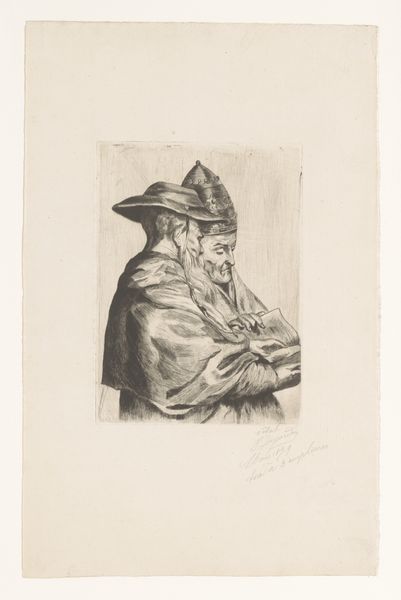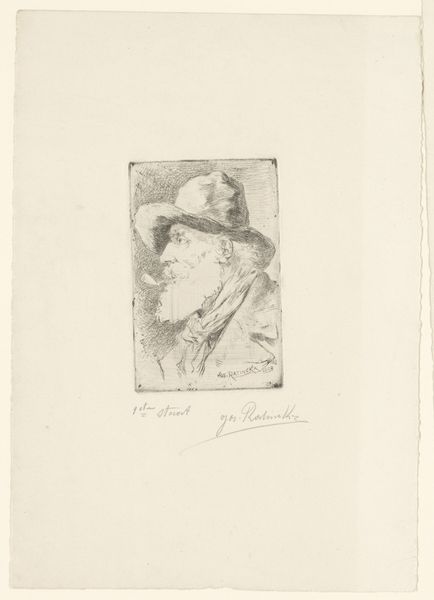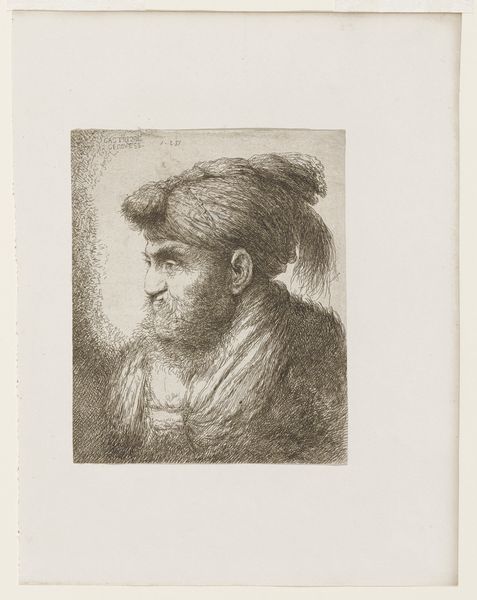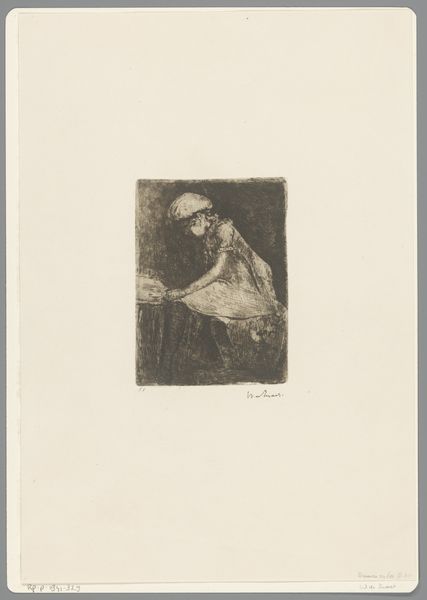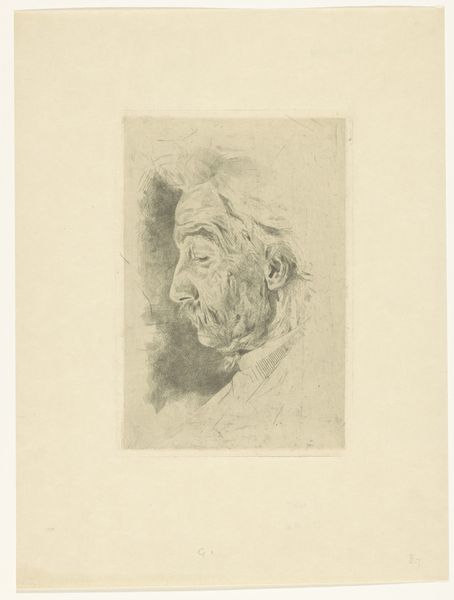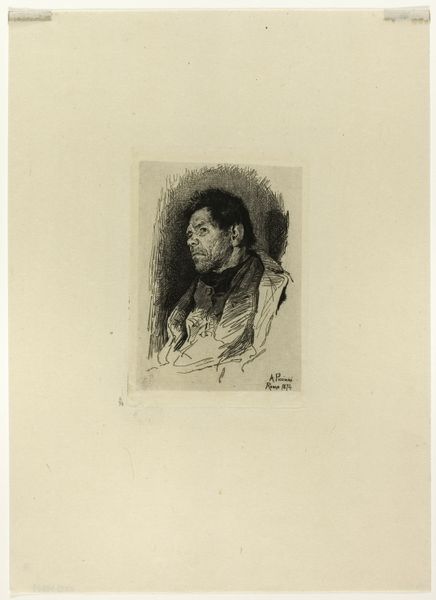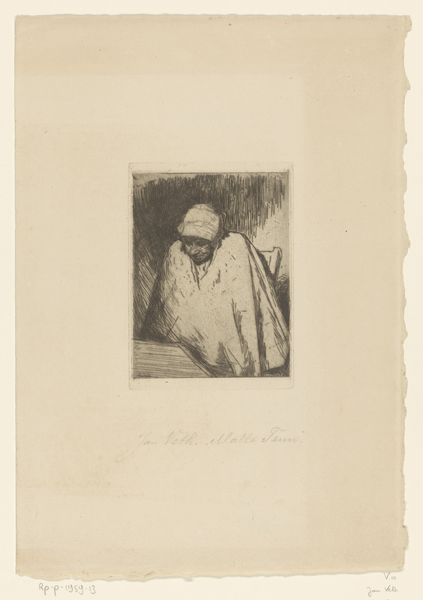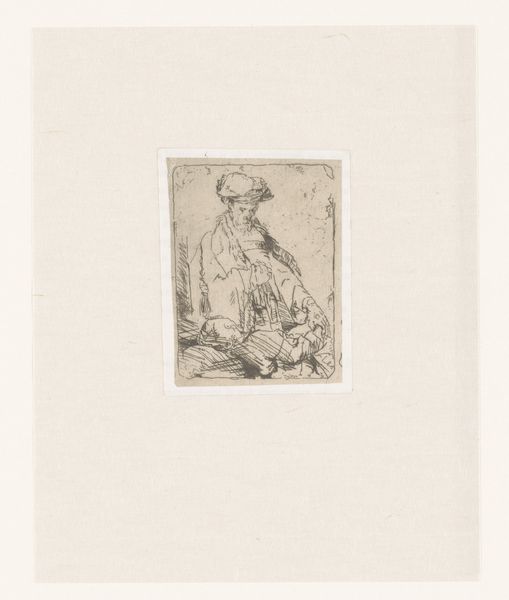
print, etching, engraving
#
portrait
# print
#
etching
#
figuration
#
engraving
Dimensions: height 104 mm, width 80 mm
Copyright: Rijks Museum: Open Domain
Curator: This piece, housed here at the Rijksmuseum, is cataloged as "Buste van een man met korte baard en platte pet," or Bust of a Man with Short Beard and Flat Cap. The artist is currently unknown, and it’s dated sometime between 1750 and 1850. Editor: It's striking how the anonymous creator was able to capture so much character with such a limited range of tones! There's an introspective, perhaps even melancholy mood evoked through the subject's downward gaze and the shadows cast by his cap. What do you make of this focus? Curator: The fact that this work is rendered through etching and engraving speaks to its intended dissemination within a burgeoning culture of printmaking. We should also consider who this man may have represented. Was this a commissioned portrait, or an attempt to capture the likeness of an everyday individual? This gets to the complex social dynamics of representation at the time. How were ideas about class and status being solidified and challenged? Editor: Exactly! These prints were reproduced, and who was depicted and by whom is significant. Consider, too, that etching and engraving involved specific tools, specialized labor, and a degree of skill available to certain classes. We see here a manipulation of line to achieve texture, shadow and form, speaking to the artisan's mastery over these materials. Curator: I'm drawn to how the portrait form itself operates. It's not just a physical representation, but a stage for constructing identity. The subject's beard, cap, and the set of his brow speak to very deliberate stylistic choices, reflecting perhaps aspirations, or perhaps simply signifiers of his social station within Dutch society. His clothing— the draped fabric— almost mimics classical sculpture. Editor: I agree. And thinking about the flat cap specifically – what sort of laborer would have worn such a thing, what fabrics were available to them? Even an accessory like a cap reveals clues about the wearer's social identity. I think the tension comes from an elite mode of portraiture applied to what appears to be an ordinary person. The making and depicting reveal all sorts of conflicts! Curator: Looking at this work has definitely highlighted for me the relationship between representation and social structures in the Netherlands at the time, and the many lenses that can be used to unpack them. Editor: For me, considering this portrait's materials and means of production has deepened my understanding of its complexities as both art and object. Thank you for joining me today!
Comments
No comments
Be the first to comment and join the conversation on the ultimate creative platform.
